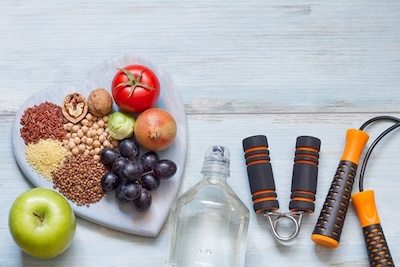
According to the U.S. government’s National Heart, Lung, and Blood Institute (NHLBI), a dietary regimen called the DASH diet was designed a number of years ago to help people lower their blood pressure… as well as offer other health benefits. In fact, in 2025, the DASH diet was named “Best Heart-Healthy Diet” by U.S. News and World Report.
Per NHLBI, DASH stands for Dietary Approaches to Stop Hypertension (DASH) and is a balanced eating plan that not only features a lower dietary sodium intake but also:
-
Is low in saturated fat, cholesterol, and total fat
-
Focuses on fruits, vegetables, and fat-free or low-fat dairy products
-
Is rich in whole grains, fish, poultry, beans, seeds, and nuts
-
Contains fewer sweets, added sugars and sugary beverages, and red meats than the typical American diet
 While all the benefits of the DASH diet can result in an improvement in health, the focus of this blog is sodium intake. Per the NHLBI, the DASH eating plan is “much lower in sodium (salt) than the typical American diet. The DASH research showed that an eating plan containing 2,300 milligrams (mg) of sodium per day lowered blood pressure. An eating plan containing only 1,500 mg of sodium per day even further lowered blood pressure.”
While all the benefits of the DASH diet can result in an improvement in health, the focus of this blog is sodium intake. Per the NHLBI, the DASH eating plan is “much lower in sodium (salt) than the typical American diet. The DASH research showed that an eating plan containing 2,300 milligrams (mg) of sodium per day lowered blood pressure. An eating plan containing only 1,500 mg of sodium per day even further lowered blood pressure.”
Nonetheless, sodium intake in the American diet is still way too high.
“Despite efforts over the past several decades to reduce dietary intake of sodium, a main component of table salt, the average American adult still consumes 3,400 mg or more of sodium a day – equivalent to about 1 ½ teaspoons of salt. The current Dietary Guidelines for Americans urge most people ages 14 to 50 to limit their sodium intake to 2,300 mg daily. People ages 51 or older, African Americans, and people with hypertension, diabetes, or chronic kidney disease – groups that together make up more than 50 percent of the U.S. population – are advised to follow an even stricter limit of 1,500 mg per day. These recommendations are based largely on a body of research that links higher sodium intakes to certain “surrogate markers” such as high blood pressure, an established risk factor for heart disease.”
— Sodium Intake in Populations: Assessment of Evidence (2013)
Americans want tasty food, which often translates to distinct salty and sweet flavors… and many are not willing to give that up if it results in blah, boring food that tastes like cardboard.
One simple way to lower salt/sodium intake in the diet is to replace part of the salt in favorite recipes with monosodium glutamate (MSG). By way of comparison, MSG contains about 12 percent sodium, while table salt contains 39 percent sodium.
Even when MSG is used in combination with a small amount of table salt, it can reduce the total sodium in a recipe by 20 to 40 percent – while still maintaining the desired flavor.
So, if you decide to give the DASH dietary lifestyle a try, keep in mind that a little MSG may go a long way in helping reduce sodium intake while keeping an appetizing flavor profile. With the cost of food these days, the last thing you want is to eat bland food (and be hungry hours later) or have the food end up wasted just because it was not satisfying.

